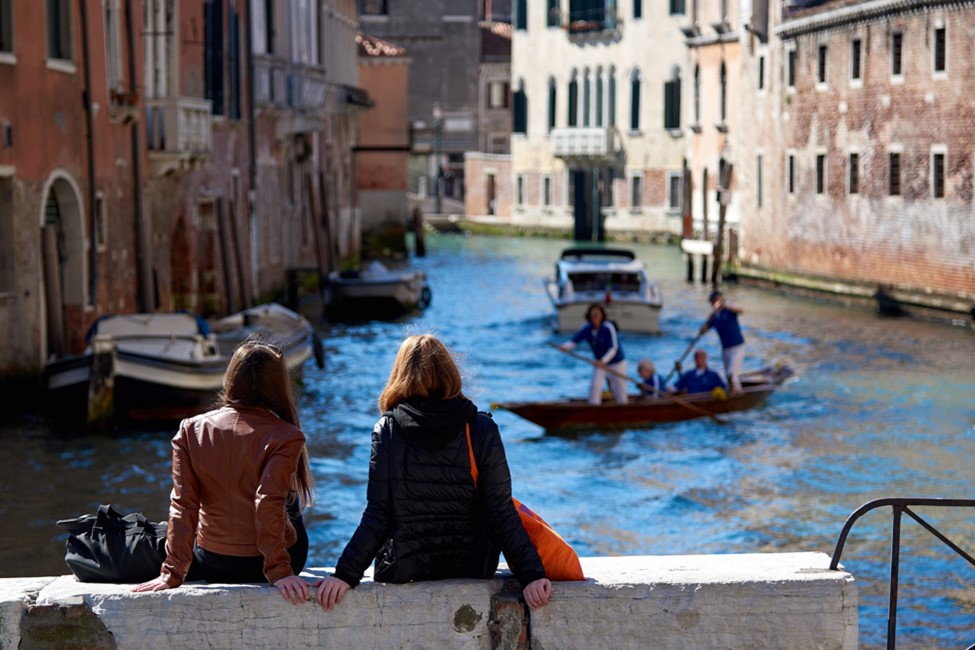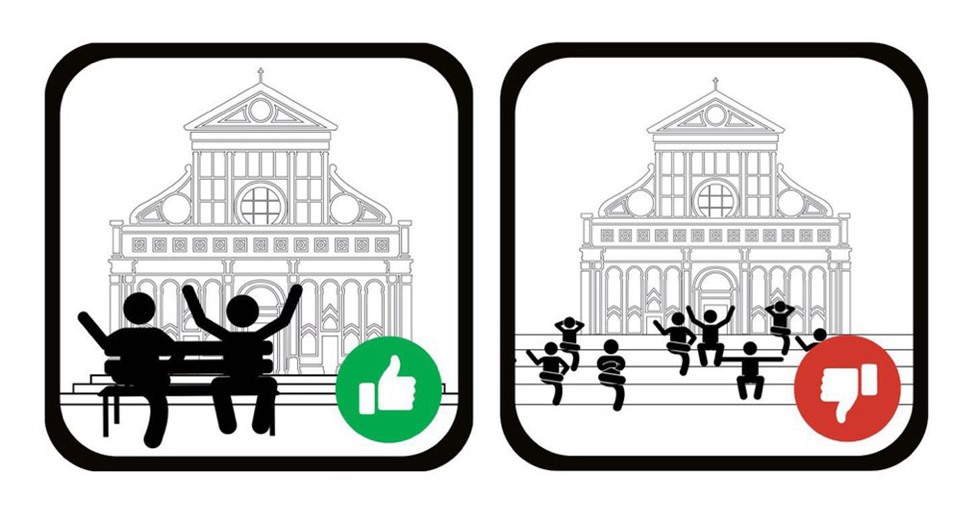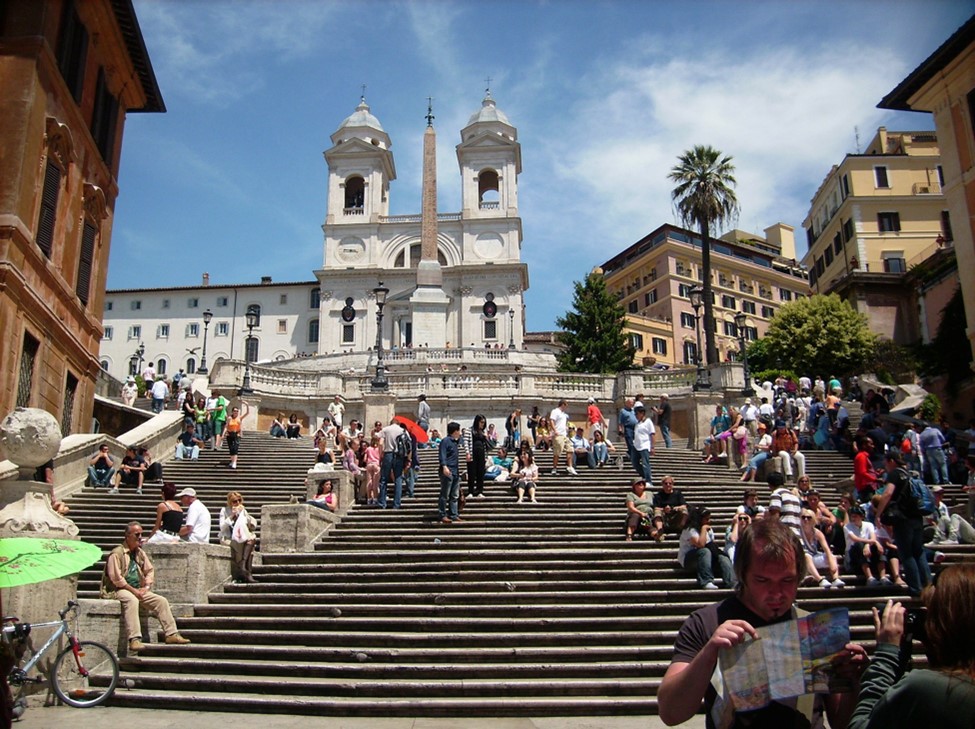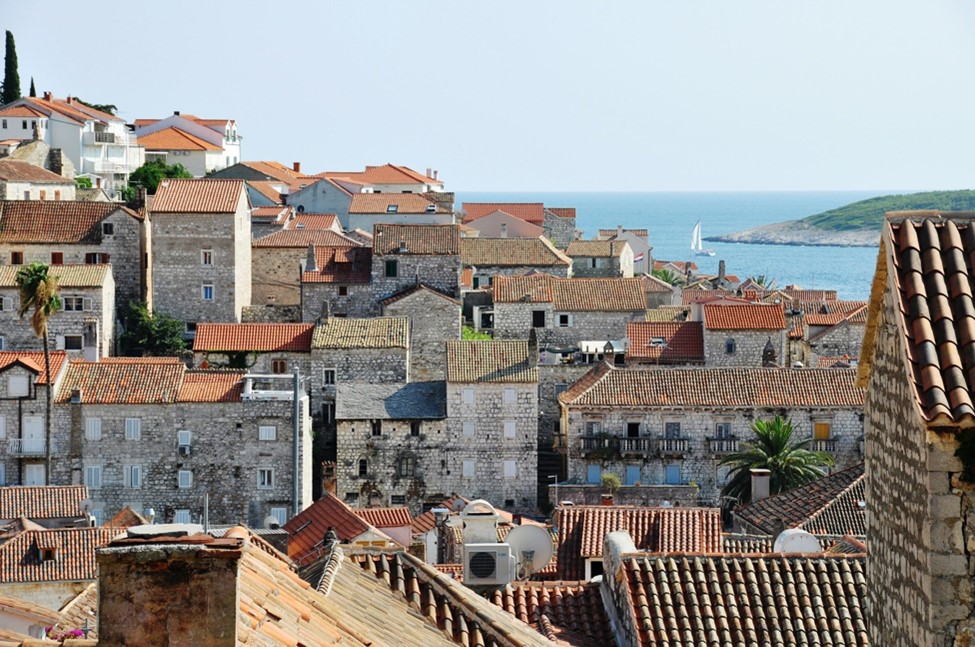POST
September 10 , 2017
Tourism Industry vs Local Life
Finding a Balance in Europe's Overwhelmed Urban Centers

Tourist behaviors – mostly in southern European cities – have been hitting travel news headlines a lot lately. Even though you'll immediately recognize many no-nos listed below as obnoxious and damaging conduct from vacationers, there are some that actually might surprise you. In an era of mass tourism, most of these measures have been put in place with the noble goal of preserving aesthetics, civility and the sanity of locals. Here's a brief guide, by location, on what to keep in mind and what to avoid next time you visit one of these popular cultural centers.
Venice
The #EnjoyRespectVenezia campaign was created to encourage tourists to respect the city and the quality of life of its citizens – or face a hefty fine. La Serenissima (the nickname for the city of lagoons that is not feeling so serene these days) receives 30 million visitors each year. With a growing number of tourists and a declining number of local residents, Venice narrowly escaped being placed on Unesco’s list of world heritage sites in danger. We would gladly do our part to protect this special place, so here is what Venetians are asking visitors to avoid:
- Littering
- Loitering on bridges and sidewalks – seriously, keeping bridge-standing to a minimum helps prevent congestion
- Eating street food on cathedral steps or bridges
- Camping inside city limits
- Bike riding in the historic center
- Sightseeing in your bathing suit
- Jumping off the bridges

Earlier this year, Venice also banned the opening of new kebab shops and fast-food outlets, as well as limiting vendors who offer pizza by the slice, all in an effort to "preserve decorum and traditions". This move followed a similar ban against new kebab shops in Verona last year (if you've spent any time in Europe, you know kebab is the ultimate fast food). Keep in mind, these measures are focused primarily on the historic city centers.
Verona
In addition to cracking down on kebabs, the city of the Capulets and Montagues is also fining tourists for various activities including sleeping in public, snacking in front of its famous monuments, fountain-bathing, and wearing swimsuits on the streets.
Florence
Like Venice's campaign, Florence followed suit with #EnjoyRespectFirenze. This prohibitory initiative warns the Renaissance city's 16 million annual visitors to help conserve the unique heritage and respect the Florentines who live there – or again, pay steep fines. This summer, authorities even began hosing down cathedral steps so tourists would be discouraged from perching there to eat and drink. The top bad behaviors they want visitors to avoid:
- Loitering – use only public benches and designated seating areas, don’t sit and snack on the church steps or you won’t make friends with the locals
- Littering
- Buying counterfeit goods
- Defacing surroundings – obviously, writing on monuments is bad

Last year, Florence's city council also cracked down on the food scene, requiring that 70 percent of food sold in the historic center be of local origin.
Rome
Both the capital Rome and the city of Torino banned late-night alcohol sales over the summer tourist season, except (critics point out) the Ottavia district where the mayor herself lives. The Rome ban, in effect until October 31st, prohibits the selling of alcohol and drinking from glass bottles after 10pm, and drinking outdoors or on public transit after midnight. There's a €150 fine for drinkers breaking the rules, and even more for vendors.
Another ban in place until the end of October involves the capital's beautiful fountains. About 40 fountains of historical significance have been specified for the ban that warns tourists and locals against eating and drinking around the famous monuments, or face a fine up to €240. In addition to snacking around fountains, authorities say it's prohibited to sit on them, hydrate your pets from them, throw things into them (other than coins of course), or swim in them.
Similar to other Italian cities we've discussed, you'll want to refrain from taking a refreshment break on Roman steps too. In fact, fashion icon Bulgari paid €1.5m to have the Spanish Steps renovated (re-opened in 2016), and Paolo Bulgari referred to loitering tourists as "barbarians". While you can still sit on the Spanish Steps, you may be flagged down if you start to eat or drink there.

Milan
Italy's fashion capital had in place a summer ban on selfie sticks, drinks in cans and glass bottles, and food trucks to combat both "anti-social behavior" and litter.
Barcelona
Barcelona's citizens have also reached their breaking point due to the influx of tourists (more than 34 million in 2016) to its central historic zone. While the majority of locals view tourism as a positive thing, they also believe it's their biggest problem. This is largely the result of poor regulation and infrastructure that has increased rent prices and pushed locals out of housing. The local government has responded by halting licensing and the construction of new accommodation projects (back in 2015) and recently passing a special urbanism plan that aims to distribute tourists more widely over the city to relieve pressure on the central area.
So what are Barcelonians asking visitors to do? Mostly, just be respectful and choose to stay in reputable accommodation.
Spanish Coasts
A blitz of bans along the Spanish coast are targeted at disorderly tourists. While these areas are typically playgrounds for young British beachgoers, it doesn't hurt to stay informed. Here are some of the more interesting things to avoid:
- Tenerife (Villa de Arisco and Arona beaches) – Building sandcastles or sand sculptures is not allowed
- Malvarrosa (Valencia) – Forbidden to go on the sand with bicycles, skates or skateboards. These objects must be stored away in your bag.
- Valencia – Sunbathers must keep their towels at least 6 meters away from the water’s edge.
- Gandia, Benidorm, San Pedro del Pinatar, Torrox (Malaga) – Early-rising beachgoers are not permitted to plant their umbrellas early just to reserve a prime spot at the beach.
- En L'Escala (Girona), Mogán (Gran Canaria) – Smoking is not allowed.
- Gozon and Almuñecar (Granada), Motril – Loudspeakers and live music are banned.
- Magaluf (Mallorca) – This summer, town officials released a list of 64 things tourists can be fined for. So much for those wild British “stag weekends” and “hen dos”.
Greece
Pilfering stones – ancient or otherwise – from the historic cities is forbidden. Those who are caught could face a night in prison until state experts assess the item for its archaeological significance.

Santorini
In another case of inadequate infrastructure and total tourist saturation, the enormously popular island of Santorini has taken unprecedented measures this year. Mayor Zorzos capped the number of visitors from cruise ships at 8,000 daily (there are no limits to the number of travelers arriving by plane). The increase in tourists has likewise increased the local population as other Greeks are drawn to the island for work. However, this makes economic and environmental sustainability a real concern.
Croatia
Mind your wardrobe in Croatia! The glamorous island of Hvar, with its charming old town and beautiful natural scenery, is the country's top party hotspot. This year, scantily-dressed tourists (as in men with no shirt or women with only a bikini top and shorts) can be fined up to €500; if they take it farther and use just their bathing suits for streetwear, the find could be up to €600. Also, the penalty for drinking and eating in public is up to €700.

Switzerland
Leave your camera behind… eh, not really. In one of the most curious bans from the past year, the Swiss village of Bergün prohibits tourists from taking photos of the town because it's just too pretty – they don't want social media images to inspire travel envy and unhappiness. Although the law is real, and tourists can be fined 5 Swiss francs just for snapping a photo, the director of tourism has admitted it's also a bit of marketing and will not really be enforced.
Offensive or Necessary?
With traveler numbers climbing, even tourists would like to encounter less tourists. But are the recent bans overreaching, and are tourists really to blame? The situation in Italy goes beyond control of tourists, with a "national exclusion law" enacted earlier this year. Critics say the law oversteps civil liberties, and there are already punishments in place to deal with the particular offenses being targeted. The underlying problem is not directly the fault of tourists, but a structural issue where the historic urban centers have increasingly catered to international visitors in terms of accommodation and businesses, and eventually local residents became displaced (this sounds familiar to Barcelona's situation, and is actually a growing problem in other trendy urban tourist destinations). You can read more on this perspective at this CityLab article.
What Can You Do?
So does all this mean you should give up your upcoming family vacation to Venice and Tuscany, or that Greek isles cruise you've had booked since last year? The answer, of course, is no. These places still rely on the tourism industry, and especially if you've never experienced these destinations, they're all one-of-a-kind for a reason. Just keep alive your curiosity for discovering the true nature of a city, both its history and its modern customs, and imagine yourself as a local.
And like many of our guests and fellow travelers know, there are many alternative spots that have a lot of culture to offer, as well as less crowds and a real authentic, immersive experience. Don't confine yourself to only the best-known cities, traveling a little out-of-the-box can have surprising rewards.
How Can We Help?
We want to help you find those off-the-beaten-path gems, where you will be welcomed not just as a tourist, but more as a traveler. This might mean an escape to one of Venice's less-frequented islands outside of the historic center – a quiet paradise of luxury, world-class cuisine and fantastic views. Or maybe you'd like to dive a bit deeper into the islands of Greece – there's Crete, Rhodes, Paros, Naxos, Folegandros, Hydra, Ithaca, and the list just goes on. Instead of Italy's Tuscany region, why not discover Umbria? Or how about plunging into a new country altogether? The next time you're considering a trip to Croatia, ask us about neighboring Slovenia, full of natural wonders and history.
You don't even have to ask, as we'll be bringing you more on all these locations in the coming months. If you've stuck with me this far, please check back in October for a destination profile of one of Greece's lesser-known islands among Americans: Rhodes.
If you’ve had any firsthand experience with the recent tourist bans, let us know on our Facebook page.
References
- https://www.theguardian.com/travel/2017/may/26/venice-tourists-cruise-ships-pollution-italy-biennale
- https://www.cntraveler.com/story/florence-launches-campaign-telling-tourists-how-to-behave
- https://www.cntraveler.com/story/milan-has-officially-banned-selfie-sticks
- https://www.citylab.com/life/2017/07/why-italy-is-banning-everything/535404/
- https://www.citylab.com/equity/2016/03/florence-says-no-to-foreign-food/474369/
- http://www.news.com.au/travel/travel-advice/tourists-drinking-climbing-trees-and-eating-in-public-cracked-down-on-by-european-authorities/news-story/
- http://www.ansamed.info/ansamed/en/news/nations/spain/2017/07/18/spanish-holidaymakers-faced-with-multiple-beach-bans_8082598b-c40b-416d-b3ad-7d7d0b8ed50b.html
- http://www.independent.co.uk/travel/news-and-advice/barcelona-locals-hate-tourists-why-reasons-spain-protests-arran-airbnb-locals-attacks-graffiti-a7883021.html
- http://www.star2.com/travel/europe/2017/08/24/peeing-picnics-best-years-tourist-bans/
- http://www.telegraph.co.uk/travel/destinations/europe/spain/majorca/magaluf/articles/magaluf-restrictions-tourist-misbehavior-crackdown/
- http://www.travelandleisure.com/photography/swiss-village-bans-photography
- https://www.theguardian.com/world/2017/aug/28/santorini-popularity-soars-but-locals-say-it-has-hit-saturation-point